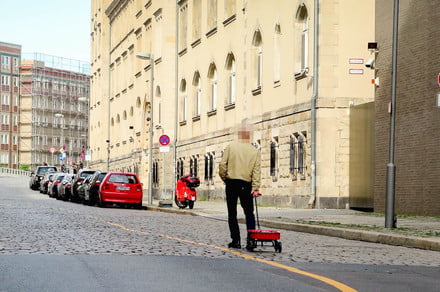Since the app’s launch in 2008, Google Maps has gradually become the go-to navigation tool for millions of people around the world. Whatever your mode of transport, a couple of taps in Maps and you’ll be shown the best way to reach your desired destination.
For drivers, the app pulls data from other Maps users on the road at any one time, enabling its algorithms to offer the quickest or most convenient route according to current conditions. You know the app is doing its job when some of the roads on the map turn red, indicating a traffic snarl. When this happens, the app’s algorithms spring into action and will, if it can, offer a better route that takes you around the road congestion.
The technology that powers Google Maps recently caught the attention of artist Simon Weckert. With a deep interest in the digital world, Weckert decided he wanted to find out if 99 smartphones wheeled along in a small cart would create a virtual traffic jam in Google Maps.
Walking the streets of Berlin with a cart full of borrowed and rented phones all running Google Maps, Weckert’s video of the stunt (below) appears to show all of the streets in which he walked turning red on Maps. That’s right — he apparently fooled Maps into thinking there was a traffic jam when there wasn’t. And as a result, Google Maps rerouted drivers in the area to other streets to avoid the jam (yes, the one that didn’t exist). Of course, Weckert couldn’t resist passing by Google’s Berlin office, too, creating gridlock (on Maps, at least) with his cart full of smartphones.
[youtube https://www.youtube.com/watch?v=k5eL_al_m7Q]
Weckert told Motherboard that he carried out the experiment in a bid to make us think about the data that we rely on every day, and to consider the amount of space cars take up on our streets.
For Google, it seems that the elaborate stunt may help it to tweak its service to detect antics like this in the future — perhaps carried out by someone with more malicious aims.
“Traffic data in Google Maps is refreshed continuously thanks to information from a variety of sources, including aggregated anonymized data from people who have location services turned on and contributions from the Google Maps community,” the tech giant said in a statement. “We’ve launched the ability to distinguish between cars and motorcycles in several countries including India, Indonesia, and Egypt, though we haven’t quite cracked traveling by wagon.”
It added: “We appreciate seeing creative uses of Google Maps like this as it helps us make Maps work better over time.”

